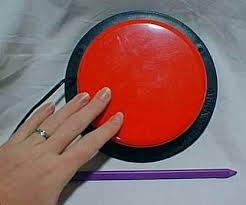In my last post, I spoke about the importance of consideration of AT devices in the IEP process. Below are 5 examples of IEPs with AT devices to help students reach the goals on the IEP. These examples come from the Wisconsin Assistive Technology Initiative.
Example 1:
Present Level of Academic
Achievement and Functional Performance: Eric participates in
regular education programs for his academic subjects. His hand strength is
limited and he fatigues quickly when doing any handwriting task. Civics and
English homework are a particular problem because of lengthy assignments and
reports that need to be completed.
Annual Goal: Eric will use a computer or portable word
processor to complete 100% of his assignments in 10th grade English and Civics
classes.
Example 2:
Present Level of Academic
Achievement and Functional Performance: Becky is learning to read
and is anxious to complete writing assignments with her peers. She is not able
to produce handwritten material due to severe spastic quadriplegia. Becky is
interested in using the computer and has been introduced to it. The staff has
helped Becky experiment with several switches in a variety of locations. She
seems to be most accurate using a switch mounted next to her head.
Annual Goal: Becky
will use a single switch mounted on a switch-mounting arm positioned to the
right side of her head and scanning software to access the computer 9 out of 10
times for a variety of educational assignments.
Example 3:
Present Level of Academic
Achievement and Functional Performance: Brandon communicates by
using unintelligible vocalizations. He will physically obtain desired items
independently and indicates refusal by pushing objects/people away. Brandon
currently understands cause/effect relationships and will activate a switch
with voice output to obtain a desired activity. It is questionable whether he
understands the specific meaning of the utterance he has produced or if he
simply knows that pressing the switch earns him an activity.
Annual Goal: Brandon
will select activities and interact with peers/adults within those activities
four out of five times when provided with voice output devices.
Example 4:
Present Level of Academic
Achievement and Functional Performance: Kelly is in the third
grade classroom for most of his day. He has a full time paraprofessional who
assists him. He is unable to use a standard keyboard because of his physical
limitations. Additionally, his speech is frequently unintelligible. He currently
uses single message and multiple message voice output devices, eye gaze, and
limited direct selection to complete his academic work. Kelly is functioning at
about the second grade level in most curricular areas.
Annual Goal: Kelly
will use an adapted keyboard with custom overlays and a computer with talking
word processing to complete all academic work.
Example 5:
Present Level of Academic
Achievement and Functional Performance: Steven is a four-year-old
boy diagnosed with pervasive developmental disorder. His placement is in an
Early Childhood classroom. He is able to understand and comprehend when spoken
to, but does not communicate his needs consistently. When choices are
simplified and broken into steps, Steven will try to communicate wants and
needs. Peer interactions are limited.
Annual goal: Steven
will use a picture board or voice output device to express wants and needs to
adults and peers in both home and school at least four times each day.







No comments:
Post a Comment